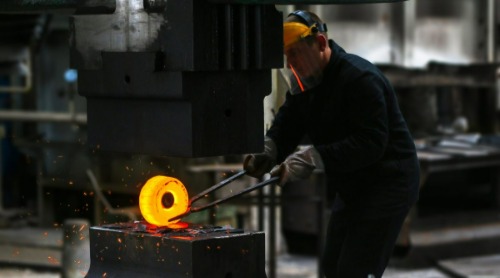3 REASONS WHY INDUSTRIAL FURNACES ARE THE RIGHT SOLUTION

For applications that require higher processing temperatures, industrial furnaces are typically the preferred choice. Industrial furnaces can generate heat that cannot be obtained in open-air systems, and since furnaces are closed devices, heat is generated and maintained more efficiently.
In an industrial furnace, heat is created by mixing fuel with oxygen, which generates combustion. The heat created through the combustion process then exits the furnace as flue gas. This type of heating generally reaches temperatures over 750? (400?). For applications that require extreme heat, such as metal molding and heat treatment, industrial furnaces may be the right solution. Here’s why:
1. Industrial Furnaces Can Provide Unmatched Capabilities to the Metal Industry
In order to efficiently melt, mold and structure heavy metals, a strong, consistent heat force is required. Industrial furnaces are capable of reaching temperatures that many other systems are not able to provide. With temperatures this high, the metal industry is able to achieve difficult applications, including:
- Hot welding
- Melting
- Stress relieving after welding
- Hot forming
- Heat treating
- Heating for forging
2. Temperature Ranges Can Be Tailored to Fit Heating Needs
Depending on the temperature you need to complete an application, industrial furnaces can be designed to meet specific requirements. When looking into purchasing an industrial furnace, it’s important to note what temperature you will need the furnace to reach most often. This way, the right furnace will be chosen that can withstand the temperature you need over an extended period of time.
For example, if 95% of your applications require temperatures that reach 1,000?, manufacturers can customize a cost-effective furnace that will meet your heating requirements. However, if you purchase a furnace that is designed to reach 1,000? and only use it for applications reaching 500?, problems may arise regarding temperature uniformity and process control.
3. Every Furnace Style Has Its Own Benefits
Industrial Furnaces can come in many different shapes and sizes, including box furnaces and tube designs. Each style is useful for different reasons. For example, a box furnace is great for loading materials while a tube system is generally better for continuous applications that occur inside a process tube.
With the versatility of industrial furnaces, you can also customize features like door placement, type of door, loading unit and the option to split the inside of the design. These customizable options allow users to tailor their devices to fit the exact needs of their applications.
Want to talk more about industrial furnaces?
Give us a call at 1.800.333.7519 or contact us online to speak with an ACI representative today.

